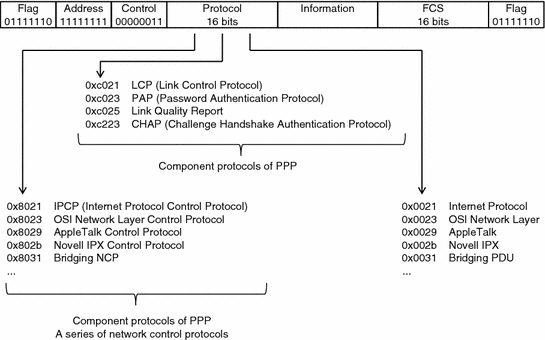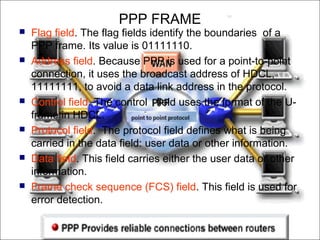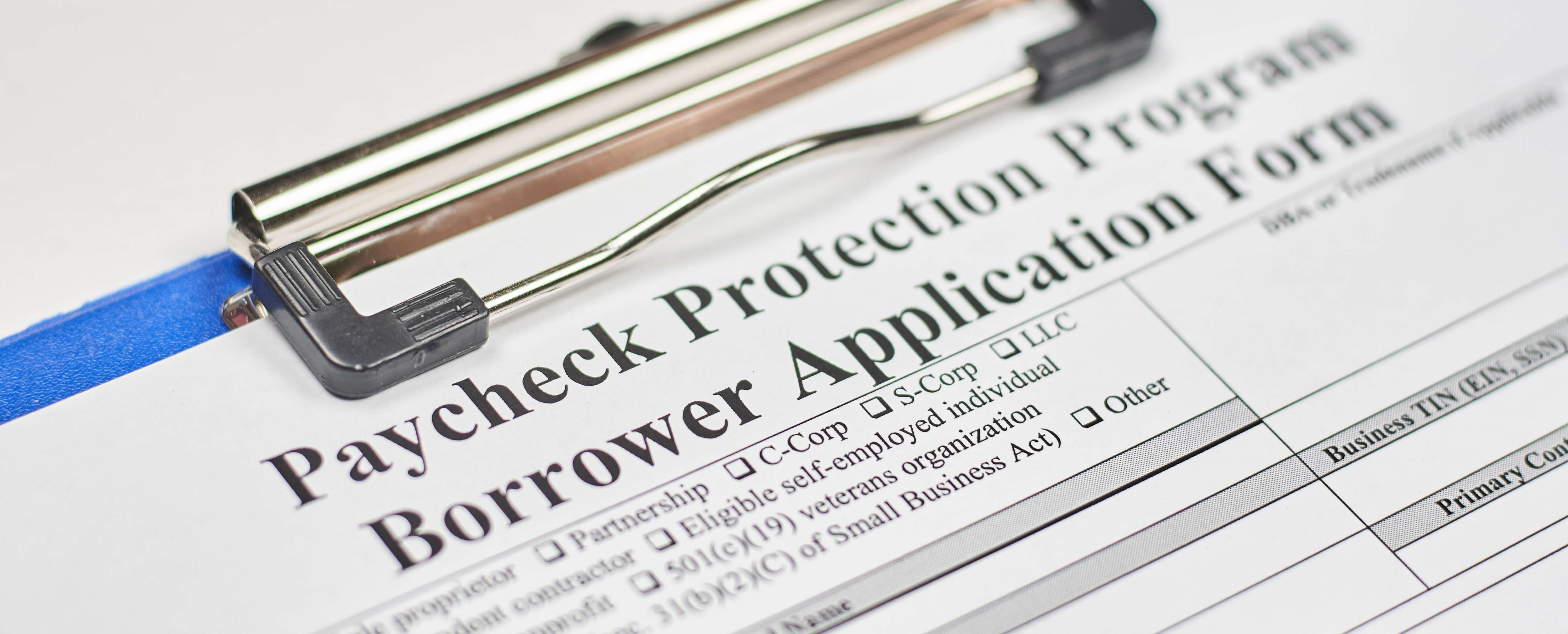

- A ppp frame includes a fcs which is a serial#
- A ppp frame includes a fcs which is a full#
- A ppp frame includes a fcs which is a password#
Although deprecated, Password Authentication Protocol (PAP) is still sometimes used.Īnother option for authentication over PPP is Extensible Authentication Protocol (EAP) described in RFC 2284.Īfter the link has been established, additional network ( layer 3) configuration may take place. RFC 1994 describes Challenge-Handshake Authentication Protocol (CHAP), which is preferred for establishing dial-up connections with ISPs. The LCP protocol runs on top of PPP (with PPP protocol number 0xC021) and therefore a basic PPP connection has to be established before LCP is able to configure it. LCP provides automatic configuration of the interfaces at each end (such as setting datagram size, escaped characters, and magic numbers) and for selecting optional authentication. It is an integral part of PPP, and is defined in the same standard specification. LCP initiates and terminates connections gracefully, allowing hosts to negotiate connection options. There is one NCP for each higher-layer protocol supported by PPP. One or more Network Control Protocols (NCP) used to negotiate optional configuration parameters and facilities for the network layer.A Link Control Protocol (LCP) to establish, configure, and test the link as well as negotiate settings, options and the use of features.

An encapsulation component that is used to transmit datagrams over the specified physical layer.PPP is a layered protocol that has three components: PPP, PPPoE and PPPoA are widely used in WAN lines.

RFC 2364 describes Point-to-Point Protocol over ATM (PPPoA) as a method for transmitting PPP over ATM Adaptation Layer 5 ( AAL5), which is also a common alternative to PPPoE used with DSL.

RFC 2516 describes Point-to-Point Protocol over Ethernet (PPPoE) as a method for transmitting PPP over Ethernet that is sometimes used with DSL. The designers of PPP included many additional features that had been seen only in proprietary data-link protocols up to that time. PPP was designed somewhat after the original HDLC specifications. It is more reliable than SLIP because it double checks to make sure that Internet packets arrive intact.
A ppp frame includes a fcs which is a full#
Like SLIP, this is a full Internet connection over telephone lines via modem. PPP was designed to work with numerous network layer protocols, including Internet Protocol (IP), TRILL, Novell's Internetwork Packet Exchange (IPX), NBF, DECnet and AppleTalk. The only requirement for PPP is that the circuit provided be duplex.
A ppp frame includes a fcs which is a serial#
PPP is commonly used as a data link layer protocol for connection over synchronous and asynchronous circuits, where it has largely superseded the older Serial Line Internet Protocol (SLIP) and telephone company mandated standards (such as Link Access Protocol, Balanced (LAPB) in the X.25 protocol suite). Two derivatives of PPP, Point-to-Point Protocol over Ethernet (PPPoE) and Point-to-Point Protocol over ATM (PPPoA), are used most commonly by ISPs to establish a digital subscriber line (DSL) Internet service connection with customers. Since IP packets cannot be transmitted over a modem line on their own without some data link protocol that can identify where the transmitted frame starts and where it ends, Internet service providers (ISPs) have used PPP for customer dial-up access to the Internet. PPP is used over many types of physical networks, including serial cable, phone line, trunk line, cellular telephone, specialized radio links, ISDN, and fiber optic links such as SONET.


 0 kommentar(er)
0 kommentar(er)
